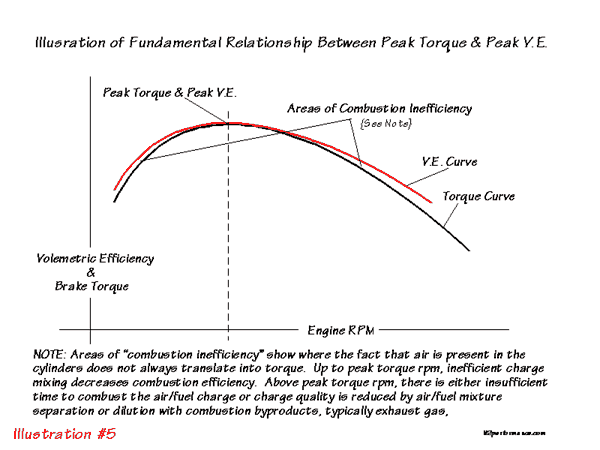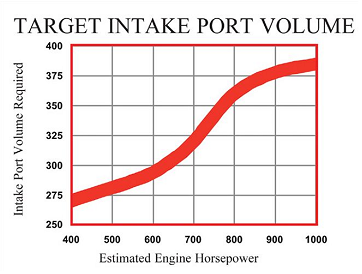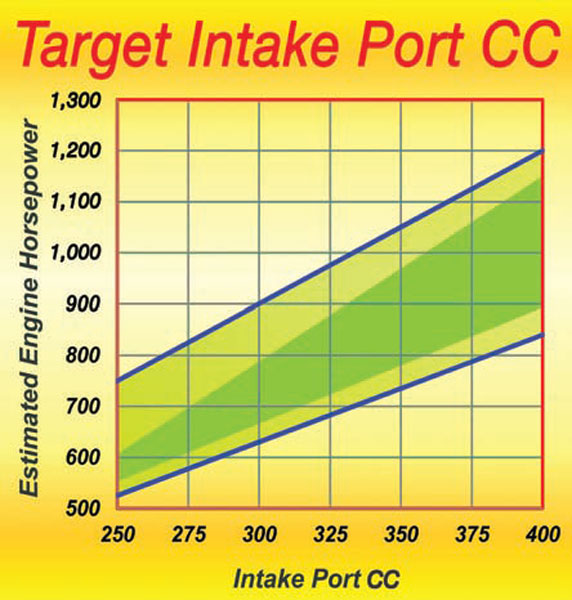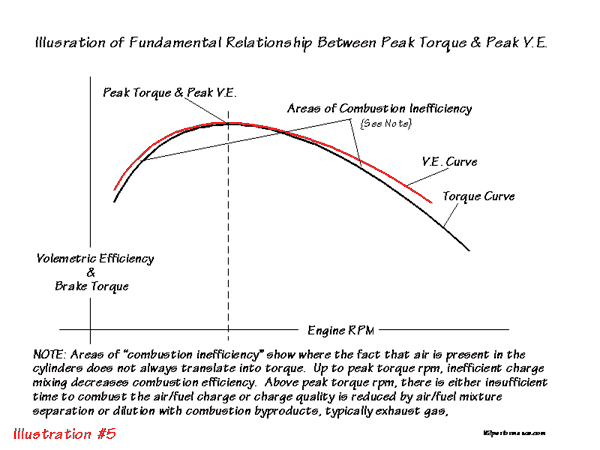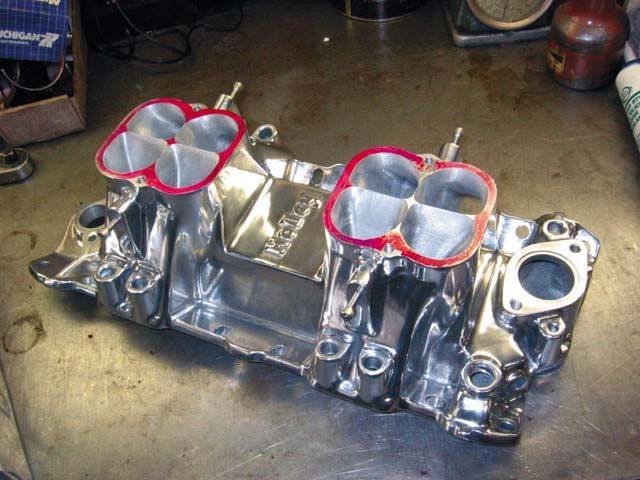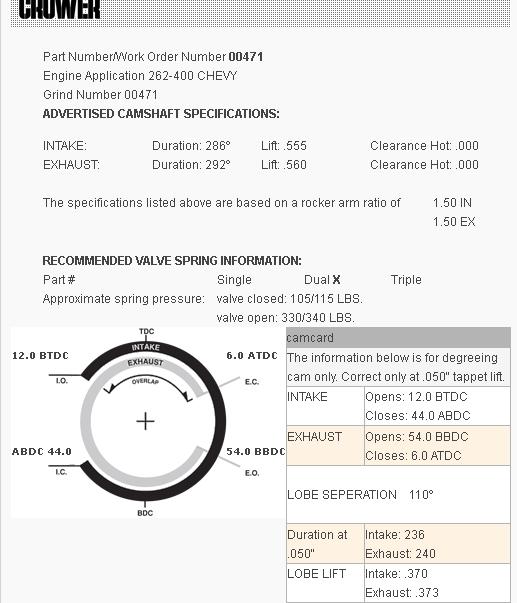enigma57
reliable source of info
Grumpy...... Regarding intake port cross section and port velocity...... I have a question for you, as I am confused over seemingly inconsistent data......
* First, old Weber technical manuals I have read over state that "the 'optimum gas speed' for best flow with Weber carburettors is 325 fps. Interesting enough, this might explain why ofttimes, increasing the size of the intake valves does not result in increased power and at times, may actually result in decreased power".
* Further, Larry Meaux (the fellow in Louisiana who designed the pipemax program) has stated that in his experience, "Anything over or near to 350 fps will probably cause a premature Choke in a Live engine." This was in the context of a discussion regarding cross section transitions in the intake runners and inside the head at short turn radius or pushrod pinch point. So those two statements seem to corroborate one another.
Now where I get confused is where I read elsewhere that high port velocity up to 0.55 mach is OK...... Mach 1 being 761.5 mph at sea level...... And 0.55 Mach (flow limit) being 614 fps.
Also...... I plugged some data into Wallace Racing's calculators and this is what I come up with......
* Looking for a solution just under 350 fps port velocity......
http://www.wallaceracing.com/lpv.php
"Your Limiting Port Velocity computed from your Cross Sectional Area of 3.1 sq. in. and Bore of 4.125 in. and Stroke of 4.00 in. and Peak RPM of 4500 is 348.77 fps."
OK, that agrees with Weber tech manuals and Larry Meaux...... BUT......
http://www.wallaceracing.com/runnertorquecalc.php
"2.75 sq. in. = Peak Torque RPM 4,544.26 RPM (calculated)", so I am assuming max HP to be between 5,700 and 6,200 RPMs with peak torque near 4,500 RPM?
* But if I go back to......
http://www.wallaceracing.com/lpv.php
"Your Limiting Port Velocity computed from your Cross Sectional Area of 2.75 sq. in. and Bore of 4.125 in. and Stroke of 4.0 in. and Peak RPM of 5500 is 480.52 fps"...... And for "6000 RPM is 524.21 fps."
So, what do I design to at redline?...... Slightly less than 0.55 mach (614 fps)...... Or slightly less than 350 fps?
Also found this...... (Only works in Internet Explorer)......
http://www.velocity-of-sound.com/veloci ... lator3.htm
285 deg. adv. duration
3rd Induction wave
4,500 RPM optimum power
1.875" diameter round port = 2.76 sq. in. (seems to agree with Wallace Racing calculator)
Best regards,
Harry
P.S. >>>> This thread is a continuation of the discussion begun here......
viewtopic.php?f=38&t=894
viewtopic.php?f=38&t=894
* First, old Weber technical manuals I have read over state that "the 'optimum gas speed' for best flow with Weber carburettors is 325 fps. Interesting enough, this might explain why ofttimes, increasing the size of the intake valves does not result in increased power and at times, may actually result in decreased power".
* Further, Larry Meaux (the fellow in Louisiana who designed the pipemax program) has stated that in his experience, "Anything over or near to 350 fps will probably cause a premature Choke in a Live engine." This was in the context of a discussion regarding cross section transitions in the intake runners and inside the head at short turn radius or pushrod pinch point. So those two statements seem to corroborate one another.
Now where I get confused is where I read elsewhere that high port velocity up to 0.55 mach is OK...... Mach 1 being 761.5 mph at sea level...... And 0.55 Mach (flow limit) being 614 fps.
Also...... I plugged some data into Wallace Racing's calculators and this is what I come up with......
* Looking for a solution just under 350 fps port velocity......
http://www.wallaceracing.com/lpv.php
"Your Limiting Port Velocity computed from your Cross Sectional Area of 3.1 sq. in. and Bore of 4.125 in. and Stroke of 4.00 in. and Peak RPM of 4500 is 348.77 fps."
OK, that agrees with Weber tech manuals and Larry Meaux...... BUT......
http://www.wallaceracing.com/runnertorquecalc.php
"2.75 sq. in. = Peak Torque RPM 4,544.26 RPM (calculated)", so I am assuming max HP to be between 5,700 and 6,200 RPMs with peak torque near 4,500 RPM?
* But if I go back to......
http://www.wallaceracing.com/lpv.php
"Your Limiting Port Velocity computed from your Cross Sectional Area of 2.75 sq. in. and Bore of 4.125 in. and Stroke of 4.0 in. and Peak RPM of 5500 is 480.52 fps"...... And for "6000 RPM is 524.21 fps."
So, what do I design to at redline?...... Slightly less than 0.55 mach (614 fps)...... Or slightly less than 350 fps?
Also found this...... (Only works in Internet Explorer)......
http://www.velocity-of-sound.com/veloci ... lator3.htm
285 deg. adv. duration
3rd Induction wave
4,500 RPM optimum power
1.875" diameter round port = 2.76 sq. in. (seems to agree with Wallace Racing calculator)
Best regards,
Harry
P.S. >>>> This thread is a continuation of the discussion begun here......
viewtopic.php?f=38&t=894
viewtopic.php?f=38&t=894

